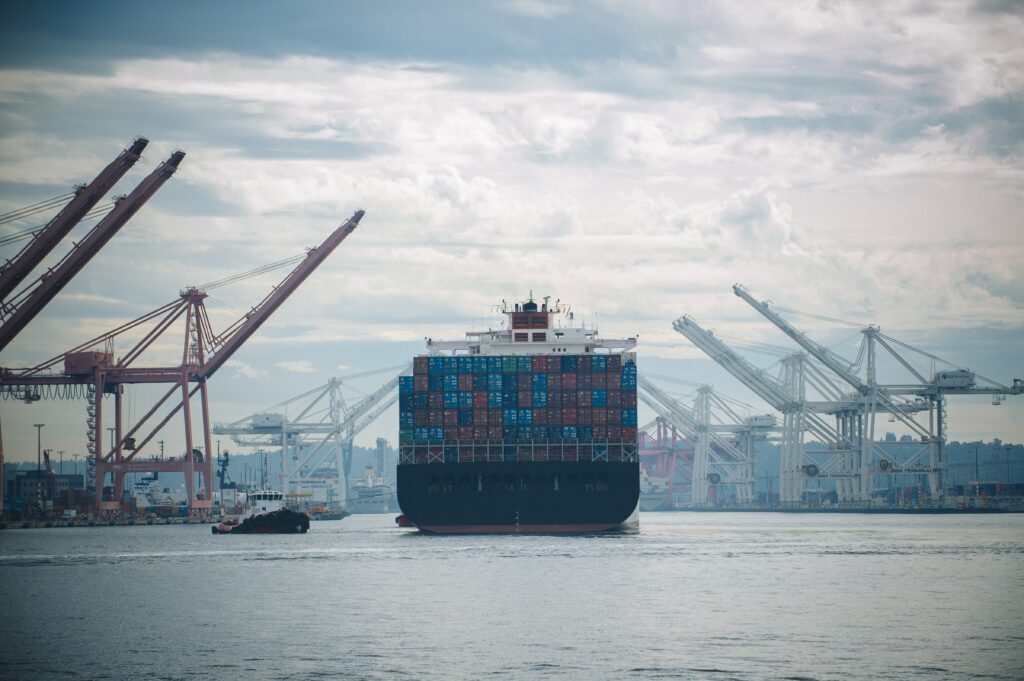
President Donald Trump and European Union leaders announced a trade framework over the weekend that will set 15% import taxes on EU goods. (Photo by Getty Images)
WASHINGTON — President Donald Trump and European Union leaders announced a trade framework over the weekend, just days ahead of Trump’s self-imposed Friday deadline to increase import taxes and his emergency tariffs come under scrutiny in federal appeals court Thursday.
Under the agreement, a 15% tariff will be applied to all products, with some exceptions, coming into the U.S. from the 27 member nations that make up the EU.
The 15% rate will also apply to automobiles, down from the 25% levy on foreign vehicles that Trump ordered in April. Trump’s 50% sectoral tariffs on foreign steel and aluminum will remain unchanged for the EU. The deal exempts certain products, including aircraft, from tariffs altogether.
Tariffs are import taxes paid to the U.S. government by businesses and other buyers that import foreign goods.
“Fifteen percent is not to be underestimated, but it was the best we could get,” European Commission President Ursula von der Leyen told reporters during a press conference Sunday.
Similar to the deal Trump announced with Japan on July 23, the EU has agreed to invest $600 billion in the United States over Trump’s term. The bloc of nations has also agreed to purchase $750 billion in U.S. energy, including liquid natural gas, over the next three years as a way to wean off of Russian fossil fuels.
‘Fundamentally rebalancing’
The White House touted the deal as “fundamentally rebalancing the economic relationship between the world’s two largest economies,” in a press release issued Monday.
The U.S. imported more goods from the EU than it exported by about $235.8 billion in 2024, according to Census data.
Trump had threatened to raise what he describes as “reciprocal” tariffs — tariffs on products outside sectoral categories of steel, aluminum and vehicles — to 30% by Aug. 1 on products from Europe, Japan and numerous other trading partners.
Trump set the date as the new deadline for his “Liberation Day” tariffs to take effect. The president announced the tariffs in early April and then promptly paused them after markets plummeted around the globe. The episode triggered a trade war with China, during which U.S. tariffs on Chinese goods peaked at 145% before the two parties agreed to negotiate.
Appeals case looms

On what the president described as “Liberation Day” on April 2, Trump heralded a universal 10% tariff on all foreign products, plus staggering additional so-called reciprocal import taxes on countries across the globe that carry trade imbalances with the U.S.
Trump justified the steep duties by declaring trade imbalances a national emergency under the International Emergency Economic Powers Act.
In February, Trump became the first president to trigger tariffs under the 1977 emergency powers law when he increased import taxes on Canada, Mexico and China in response to illegal fentanyl smuggling.
The emergency tariffs are at the center of a case that will go before the U.S. Appeals Court for the Federal Circuit Thursday.
The case stems from two lawsuits, now consolidated, filed by a handful of businesses and a dozen Democratic state attorneys general who argued the president doesn’t have authority to impose tariffs under the emergency law.
The U.S. Court of International Trade struck down Trump’s emergency tariffs as unconstitutional on May 28.
Arizona, Colorado, Maine, Minnesota, Nevada, New Mexico and Oregon were among the states that brought the suit.
V.O.S. Selections, a New York-based company that imports wine and spirits from 16 countries, led the business plaintiffs. Others included a Utah-based plastics producer, a Virginia-based children’s electricity learning kit maker, a Pennsylvania-based fishing gear company and a Vermont-based women’s cycling apparel company.
Upon appeal from the White House, the Federal Circuit allowed Trump’s tariffs to remain in place while the case moved forward.


